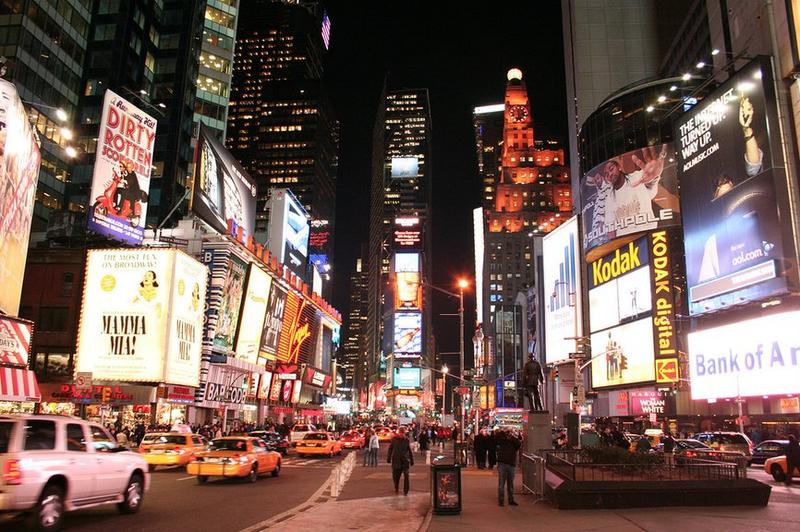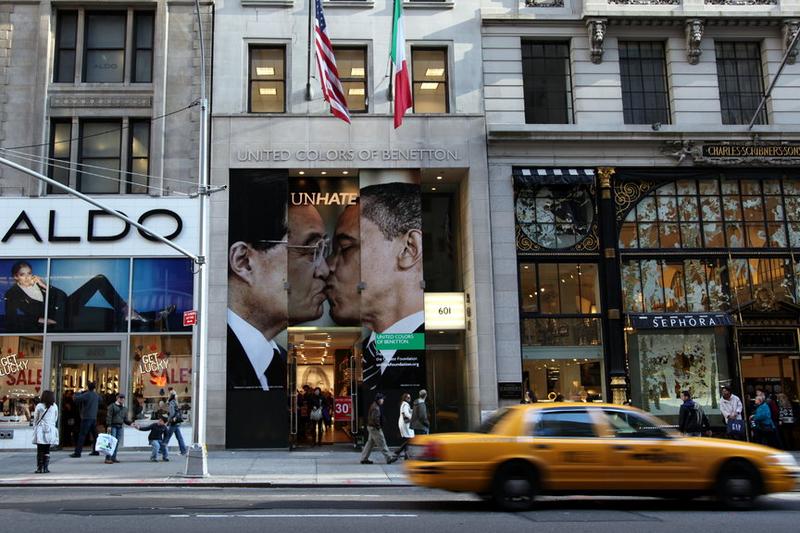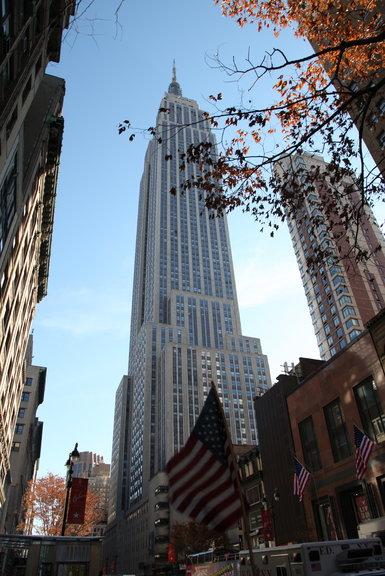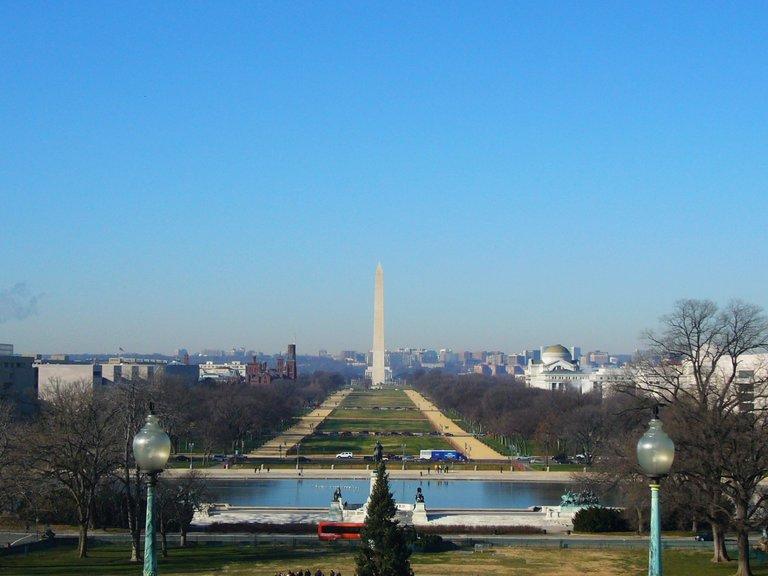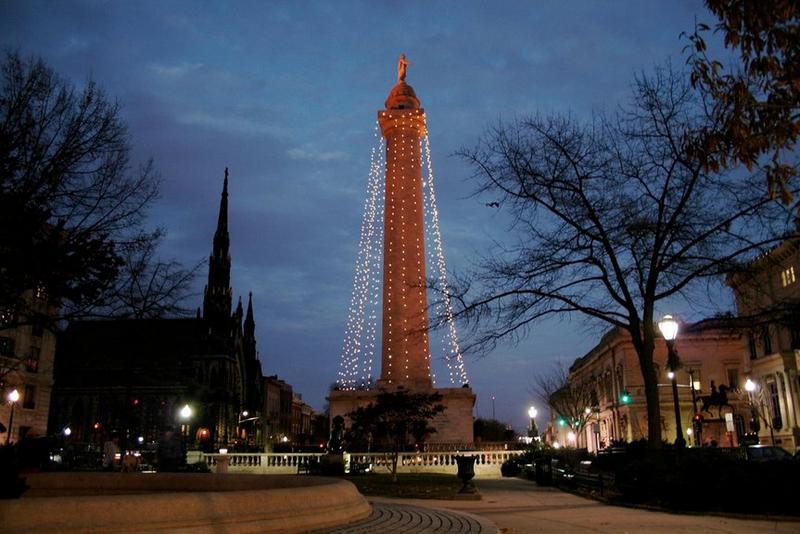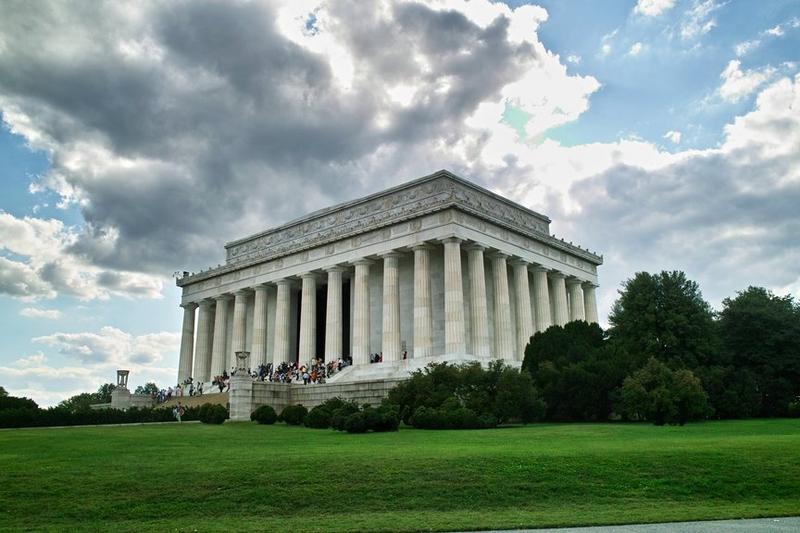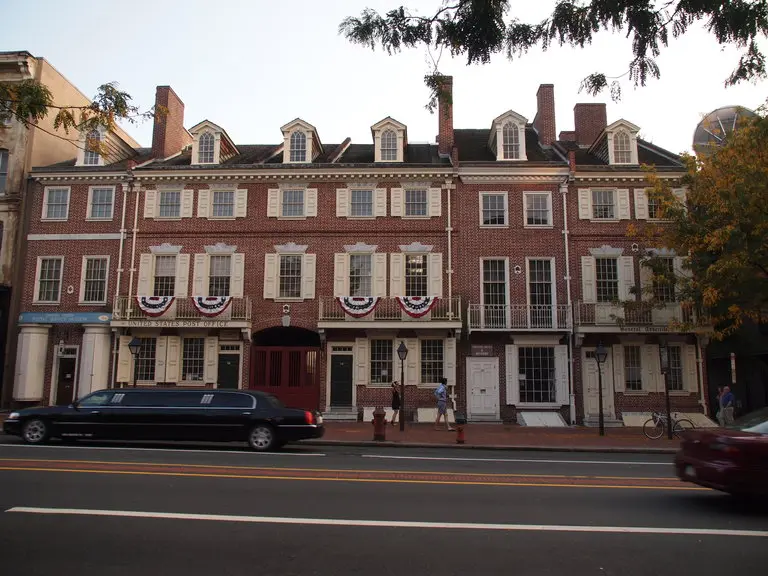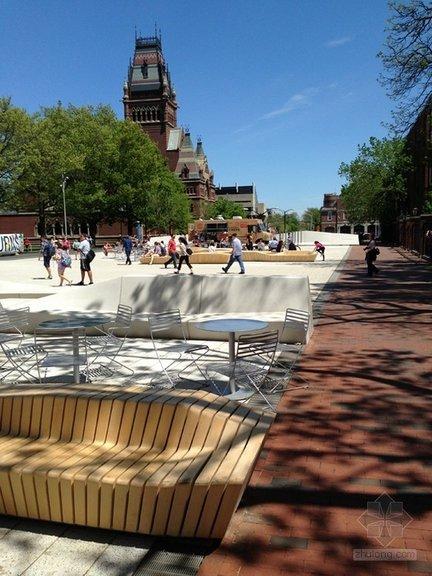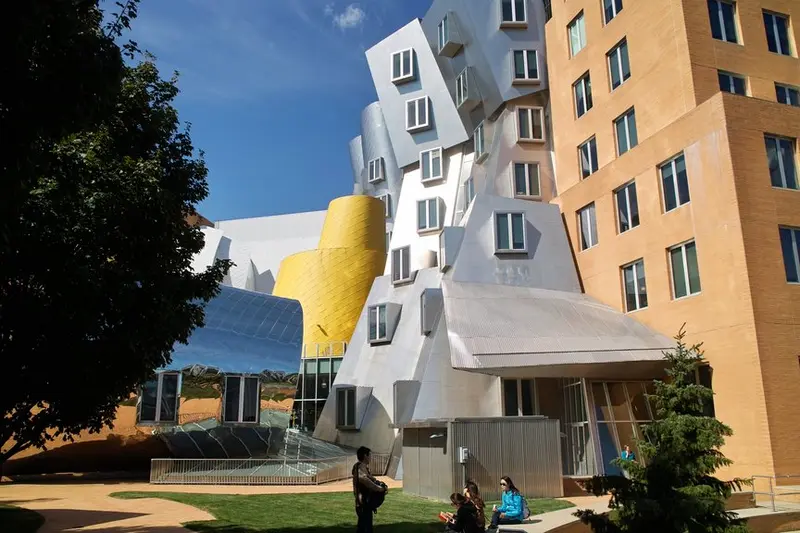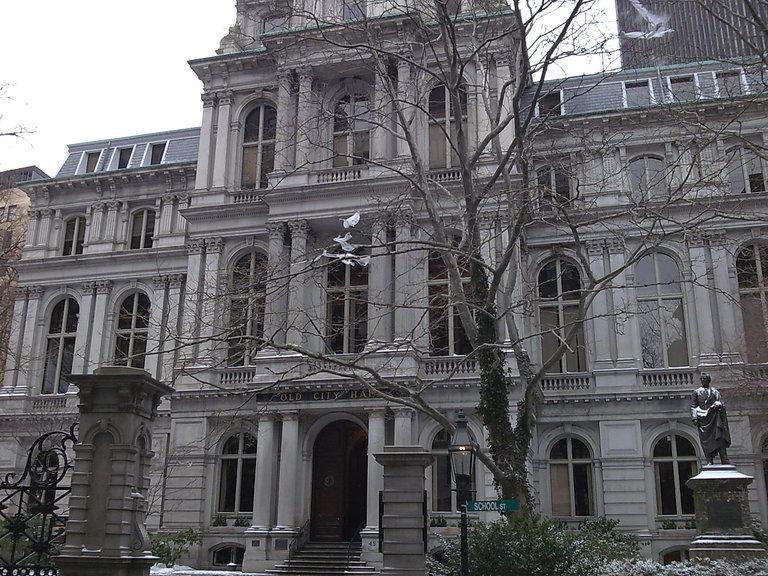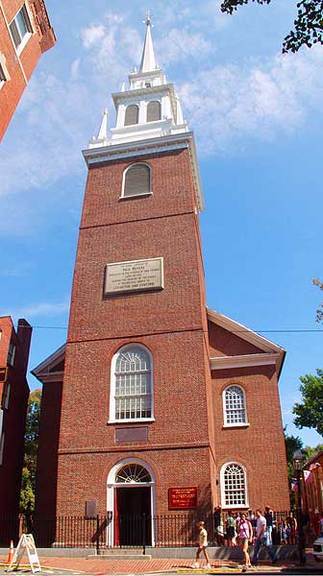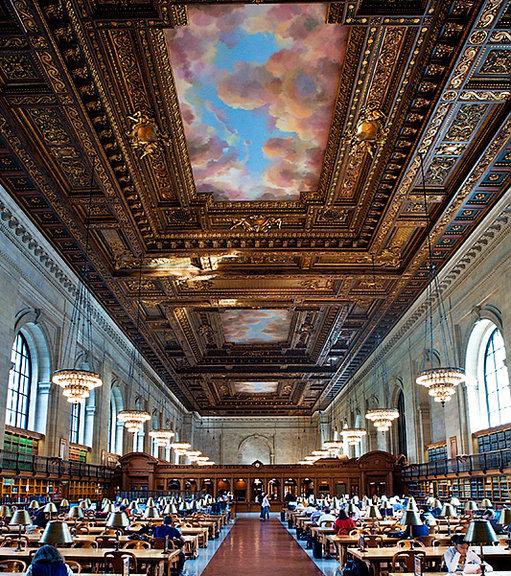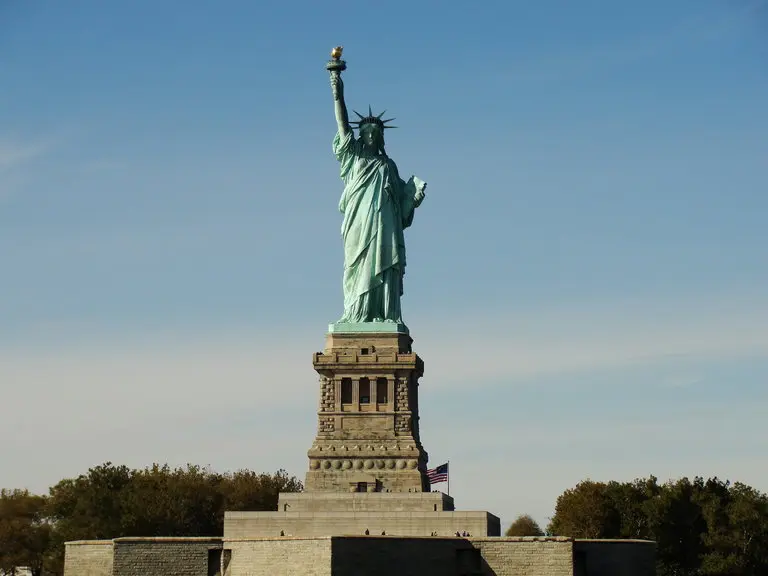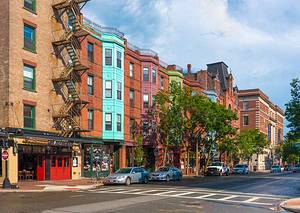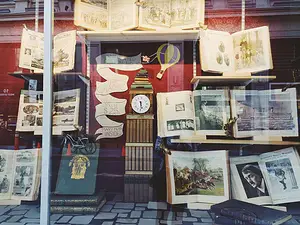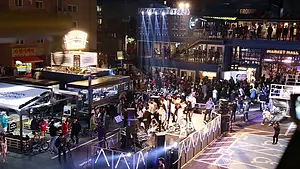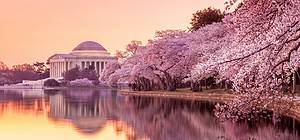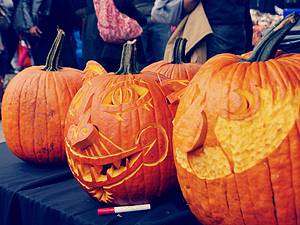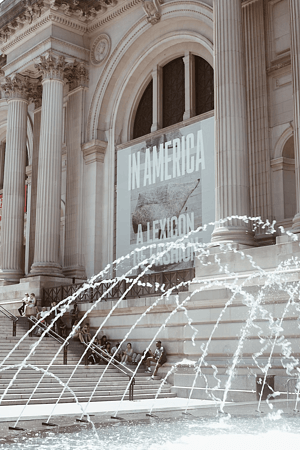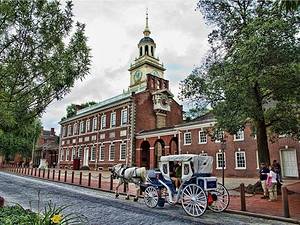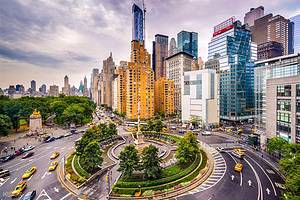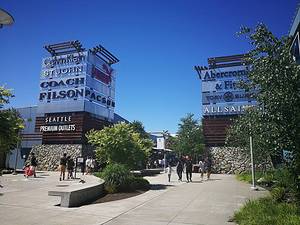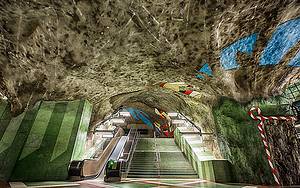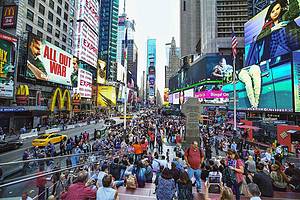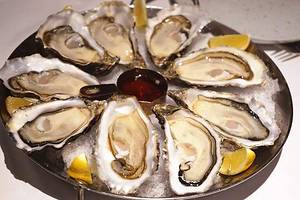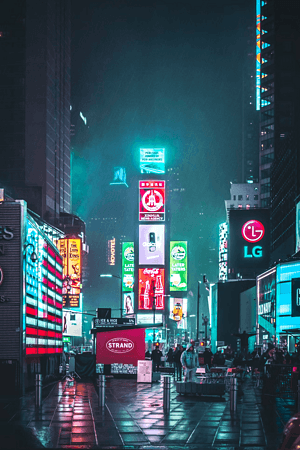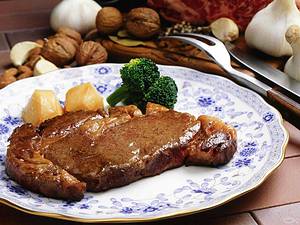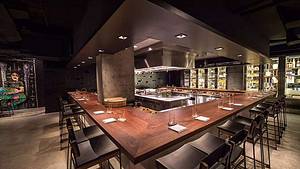A tour of architecture and humanities in four cities of the eastern United States on July 7th
4 cities |
26 attraction(s) |
total distance 61
km
 TIPS
TIPS
Day1
Day2
Day3
Day4
Day5
Day6
Day7
Day1: New York
5 attraction(s) ·
17 km
1
Times Square, also known as "Crossroads of the World," is a block in Manhattan, New York City, located at the intersection of West 42nd Street and Broadway. It is home to nearly 40 shopping centers and theaters, making it a bustling entertainment and shopping center. It is also the only area in New York City where owners are required by law to display prominent advertising billboards. Times Square is also the live broadcast location of "Good Morning, America."
3
km
2
The avenue that runs through Manhattan, starting from Washington Square Park and going north to 143rd Street, is lined with numerous shops.
3
km
3
The Empire State Building is a famous skyscraper located in New York City, USA. It has 102 floors and was designed by the architectural firm Shreeve, Lamb and Harmon. Construction began in 1930 and was completed in 1931 in just 410 days. It is named after the nickname of the state of New York, Empire State. On clear days, visitors can enjoy breathtaking views of New York from the observation decks on the 102nd and 86th floors.
2
km
4
Broadway is actually a major north-south avenue that runs through Manhattan Island. It is famous for its numerous theaters and has become synonymous with American plays and musicals. The theaters between 44th and 53rd streets on Broadway are known as "Broadway theaters" and mainly stage classic, popular, and commercial productions. The theaters between 41st and 56th streets are known as "Off-Broadway theaters" and primarily showcase lesser-known, experimental, and low-budget productions.
11
km
5
Speaking of New York, we can't overlook Wall Street, also known as the world's financial center. Located in Lower Manhattan, it is a narrow street that is only 500 meters long and 11 meters wide. With skyscrapers on both sides, walking through the street feels like entering a deep canyon. After 9/11, Wall Street's influence in the financial world gradually weakened, and many financial headquarters relocated to the increasingly prosperous Midtown. However, the headquarters of the New York Stock Exchange, NASDAQ, American Stock Exchange, New York Mercantile Exchange, and New York Futures Exchange are still located on Wall Street. Its influence should not be underestimated. In the nearby Bowling Green Park, there is a bronze statue of a bull, symbolizing the bull market. It is a famous symbol of Wall Street and attracts tourists all year round, making the bronze bull shiny from being constantly touched.
Day2: Washington D.C.
4 attraction(s) ·
6 km
1
Capitol Hill, also known as the Capitol Building, refers to the building that serves as the office of the United States Congress, the legislative branch of the U.S. federal government. It is located on the eastern end of National Street in Washington, D.C., at the highest point of the city at an elevation of 25 meters. The Capitol Building is a Roman-style structure and serves as the office building for the two chambers of the U.S. Congress, the House of Representatives and the Senate. The central rotunda is the geometric center of Washington, D.C., with a height of 53 meters and a diameter of over 30 meters. The walls of the rotunda feature eight large oil paintings depicting important events in American history. The interior of the dome is a grand hall that can accommodate two to three thousand people. The top of the dome is a double-layered dome with the Statue of Freedom, symbolizing the spirit of the United States. Visitors can also enter the Library of Congress through corridors connected to the Capitol Building. The exterior of the Capitol Building is made entirely of white marble, giving it a sacred and pure feeling. Americans consider it as the highest symbol of the people's right to govern. Currently, the dome of the Capitol Building is the iconic backdrop for televised political news coverage in the United States. The dome underwent renovations from 2014 to 2016, with the external repairs completed in winter 2015 and the internal repairs completed in autumn 2016. However, these renovations do not affect the visitation of Capitol Hill (through reservations at the Visitor Center or same-day tickets).
2
km
2
National Mall is an open national park in Washington, D.C., United States. It extends from the Lincoln Memorial to Capitol Hill and includes famous buildings such as the Washington Monument, National Museum of American History, Union Station, Jefferson Memorial, and Roosevelt Memorial. Capitol Hill, named after being located at the highest point in the city at 25 meters, is where the United States Capitol, the legislative branch of the government, is situated. It is also an important site for significant protests, marches, and civil rights speeches in American history. Walking from Capitol Hill towards the Lincoln Memorial, with the right angle, you can see the Washington Monument reflecting in the reflection pool, which is cleverly designed. There are not too many tourists here, so you can feel the solemnity of being in the capital and the core area of the government.
3
km
3
The Washington Monument is located in the center of the National Mall. It is a obelisk-shaped building erected to commemorate the first President of the United States, George Washington. Standing at a height of 169 meters, the exterior of the monument has no text while the interior walls are adorned with 188 commemorative stones donated from various places, including one in Chinese, which features a quote from the Chinese scholar Xu Jieshe's "Brief Records of the Seas and Continents". Visitors can ride an elevator to the top of the Washington Monument, where they can enjoy a panoramic view of the city through eight observation windows.
3
km
4
The Lincoln Memorial, located at the western end of the National Mall in Washington, D.C., is a classical building modeled after the ancient Greek Parthenon. It was established to commemorate President Abraham Lincoln. The memorial is 118 feet long from east to west, 188 feet wide from north to south, and 80 feet high. It is supported by 36 plain white marble columns. At the center of the memorial is a 19-foot-tall seated statue of Lincoln. The left wall of the statue is inscribed with Lincoln's second inaugural address as President, and the stone wall behind it bears the inscription: "In this temple, as in the hearts of the people, for whom he saved the Union, the memory of Abraham Lincoln is enshrined."
Day3: Washington D.C.
4 attraction(s) ·
12 km
1
The Pentagon, located in Arlington, Virginia, southwest of Washington, D.C., is the headquarters of the United States Department of Defense, the highest military command authority in the United States. It is a five-sided building and covers an area of 2.359 million square meters. The building is 22 meters high with 5 floors, a total floor area of 608,000 square meters, and a usable area of approximately 344,000 square meters. It was completed on April 15, 1943, and has been in use since May of the same year. The Pentagon can accommodate 23,000 staff members (including military and civilian personnel) working there. The building has a total corridor length of 28 km, telephone lines of at least 160,000 km, handles at least 200,000 telephone calls daily, and receives over 1.2 million pieces of mail every day. The building is well-equipped with 4,200 clocks, 691 water dispensers, 284 bathrooms, 16,250 light fixtures, and various facilities such as restaurants, shops, post offices, banks, and bookstores. The four large parking lots outside the building can accommodate approximately 10,000 cars.
6
km
2
Thomas Jefferson, founding father of the United States, the primary author of the Declaration of Independence, founder of the University of Virginia, a learned scholar with high proficiency in philosophy, law, architecture, mathematics, archaeology, horticulture, and botany. The Thomas Jefferson Memorial was built in his honor, construction began in 1938 under the supervision of President Roosevelt and was completed in 1943. The memorial is designed in the Roman Pantheon-style dome, standing at 96 feet tall, made of white marble.
4
km
3
The tidal lake is located southwest of National Square, with thousands of cherry trees imported from Japan planted along the lake. The Yoshino cherry trees here have large blossoms, and they bloom before growing leaves, making the cherry blossom viewing even more impressive than in Japan. Across the lake from the square is the serene and elegant Jefferson Memorial, and boating is also possible in the lake.
3
km
4
The White House is the residence of the President of the United States. It is located at 1600 Pennsylvania Avenue NW in Washington, D.C., just north of the Washington Monument. The White House is divided into the main building and the east and west wings. The main building houses the library, map room, and display rooms for gold, silver, and porcelain collections, as well as various gifts from other countries. The west wing is the administrative area, which includes the Oval Office where the president works. Outside the building, there is the Rose Garden and the South Lawn.
Day4: Philadelphia
3 attraction(s) ·
2 km
1
Benjamin Franklin (1706-1790) was not only one of the founding fathers who participated in drafting the Declaration of Independence and the United States Constitution, but also a renowned scientist, educator, diplomat, and writer. Franklin invented the lightning rod through his kite experiment and founded the prestigious Ivy League school, the University of Pennsylvania. There are numerous streets in Philadelphia named after him, and his portrait is even printed on the 100-dollar bill.
Franklin passed away in 1790. Although his former residence has been destroyed, the site has been preserved and the Benjamin Franklin Museum was established. The museum displays Franklin's inventions and personal belongings, such as his writing desk. Visitors can learn more about Franklin's life through multimedia interactive exhibits. After years of renovation, the museum reopened on August 24, 2013, and is listed in the National Park Service's National Historic Site. The Franklin Post Office here is the only post office that has been in operation since before the founding of the United States. Letters mailed from here can be stamped with a seal bearing Franklin's handwriting.
1
km
2
Independence Hall in Pennsylvania was the state house before the American Revolution. From Columbus discovering the New World to the mid-18th century, immigrants in America established thirteen colonies that were still under British rule. Due to unbearable taxation imposed by Britain, tensions between American immigrants and Britain escalated after 1770, leading to protests such as the Stamp Act and the Boston Tea Party. The "shot heard round the world" in Lexington in 1775 marked the beginning of armed resistance against British rule by Americans. In 1776, representatives from the colonies gathered in the Continental Congress held here, and on July 4th, they passed the Declaration of Independence, drafted by Thomas Jefferson, proclaiming the thirteen colonies in North America as the independent and free United States of America. This day also became known as Independence Day in the United States. After eight years of war, America finally defeated Britain in 1783. In 1787, the Constitutional Convention was held here, resulting in the creation of the United States Constitution, the first written constitution in human history. The Independence Hall now only offers guided tours as a team, where visitors can learn about the most significant moments in American history in about 30 minutes.
1
km
3
Outside Independence Hall in Philadelphia stands a modern bell tower, one of the world's most famous bells - the Liberty Bell. Inscribed on its face are the words from the Bible: "Proclaim Liberty Throughout All the Land Unto All the Inhabitants thereof."
The Liberty Bell was commissioned in 1751 to commemorate the enactment of the Charter of Privileges by William Penn in 1701. It arrived in Philadelphia in 1752 but developed a crack when it was first rung. Over the next century, it experienced several major cracks and underwent two large repairs. The visible one-centimeter-wide crack seen today is not from the original damage, but from efforts to prevent the crack from expanding. On closer inspection, fine hairline cracks can be seen extending from the top of the large crack to the top of the bell, leading to the abandonment of restoration efforts.
The Liberty Bell is said to have been rung on many important historical occasions, most notably on July 4, 1776, to convene the public for the reading of the Declaration of Independence. However, historians have expressed doubts about this claim. The Liberty Bell is a symbol of Philadelphia and the spirit of American freedom, and it is a source of pride for the American people. It has played a significant role in the early history of the United States. Aside from the original bell on display inside the hall, there are also several replicas of the Liberty Bell. Regardless of which bell it may be, they all represent the values of American liberty and democracy and hold a special place in the hearts of Americans.
Day5: Boston
2 attraction(s) ·
4 km
1
Harvard University was established in 1636 and is the oldest university in the United States. It wasn't until 1693 that other universities were founded. Eight graduates from the Ivy League schools have served as US presidents, and many others have won Nobel Prizes and Pulitzer Prizes. Harvard's 10 schools annually educate 6,500 undergraduate students and 12,000 graduate students. Harvard Yard, with its statue of John Harvard, is a prominent landmark on campus. Every visitor hopes to take a photo with the statue and touch its foot for good luck.
4
km
2
Massachusetts Institute of Technology (MIT) is one of the best science and technology colleges in the world and is also an important attraction for academic trips in Boston. It has a variety of buildings with different styles, many of which were designed by its alumnus I.M. Pei. The most famous building is the Great Dome, a majestic structure supported by a giant cylindrical base, which is the iconic building of MIT. Another notable building is the Ray and Maria Stata Center, which has a unique design with interlocking cylindrical and rectangular shapes, vibrant colors, and a complex layout, giving it a futuristic and modern feel. It is definitely worth stopping by to take a look.
Day6: Boston
4 attraction(s) ·
3 km
1
This Franco-Second Empire style building is now the location of a trendy hotel and offices. It is a witness to history. In 1635, the first public school, the Boston Latin School, was established here. Mosaic bricks on the sidewalk mark the places where Benjamin Franklin, Ralph Waldo Emerson, Charles Bulfinch, and others once studied. The courtyard also features statues of founding father Benjamin Franklin, Boston's second mayor Josiah Quincy, and a sculpture representing the Democratic Party's donkey.
2
km
2
The Old State House is a historic red brick building in Boston, United States. It was built in 1712-1713 to replace the first wooden city hall (built in 1657) that was destroyed in a fire in 1711. It is the oldest public building in Boston and a stop along the Freedom Trail. On July 18, 1776, the Declaration of Independence was first read to a jubilant crowd from the east balcony of the Old State House. At that time, the Continental Army had already driven the British army out of Boston. After the American Revolution, the building was used as the Massachusetts government until it moved to the current Massachusetts State House in 1798. From 1830 to 1841, the building briefly served as Boston City Hall before being converted to commercial use. On July 11, 1976, Queen Elizabeth II of the United Kingdom visited the Old State House as part of the US Bicentennial celebrations.
1
km
3
The Boston Massacre was an event that occurred on March 5, 1770 in Boston, resulting in the deaths of 5 civilians at the hands of the British army. The aftermath of this event sparked rebellion in the British North American colonies and ultimately led to the American Revolution. The tense situation between soldiers and civilians in Boston, due to a large military presence by the British, led to a mob attacking the troops, resulting in the use of muskets by the soldiers. Three civilians were killed on the spot, 11 were injured, and two died afterwards.
2
km
4
The Old North Church, officially known as Christ Church in the City of Boston. It is said that the famous signal "One if by land, two if by sea" was sent from here during the American Revolution. This phrase is related to Paul Revere's midnight ride on April 18, 1775, before the battles of Lexington and Concord. The church is the oldest still-functioning church building in Boston and is designated as a national historic landmark. Inside the church, there is a half-body statue of George Washington, which the Marquis de Lafayette said was his best likeness.
Day7: New York
4 attraction(s) ·
21 km
1
Central Park is a very large urban park located between 59th Street and 110th Street. It has a zoo, playgrounds, theaters, artificial lakes, ice skating rinks, and other sports facilities, as well as spacious lawns for visitors to rest. Its 10-kilometer loop road is highly favored by joggers. In the land-scarce Manhattan, it is rare to have such a beautiful park that is open to the public for free.
4
km
2
The Rockefeller Center is located across from St. Patrick's Cathedral and was built with funding from the Rockefeller family. It consists of 19 buildings with interconnected lower levels. The main building of the center has a famous observation deck called the Top of the Rock, which offers stunning views of Manhattan.
2
km
3
The New York Public Library (NYPL) is one of the major library systems in the United States, along with the Brooklyn Public Library system and the Queens Library system, forming the three largest public library systems in New York City. The main building of the NYPL is located on Fifth Avenue and is known for housing the Gutenberg Bible and Newton's Principia Mathematica.
16
km
4
The Statue of Liberty, officially known as the "Statue of Liberty Enlightening the World," was erected on October 28, 1886, on Liberty Island near the mouth of the Hudson River in New York Harbor. The statue, wearing a crown and holding a torch, has been a symbol of democracy and freedom for over a century, representing the ideals cherished by the American people. The statue is made of 120 tons of steel for its framework, 80 tons of copper plates for its outer skin, and has a total weight of 225 tons. Visitors can take a ferry to the base of the statue and then ride an elevator to the top of the pedestal, followed by climbing a spiral staircase with 171 steps to reach the crown. The Statue of Liberty's interior features a museum and stairs, allowing tourists to visit the statue's pedestal and, with advance reservations, climb to the crown for a panoramic view of Manhattan.
